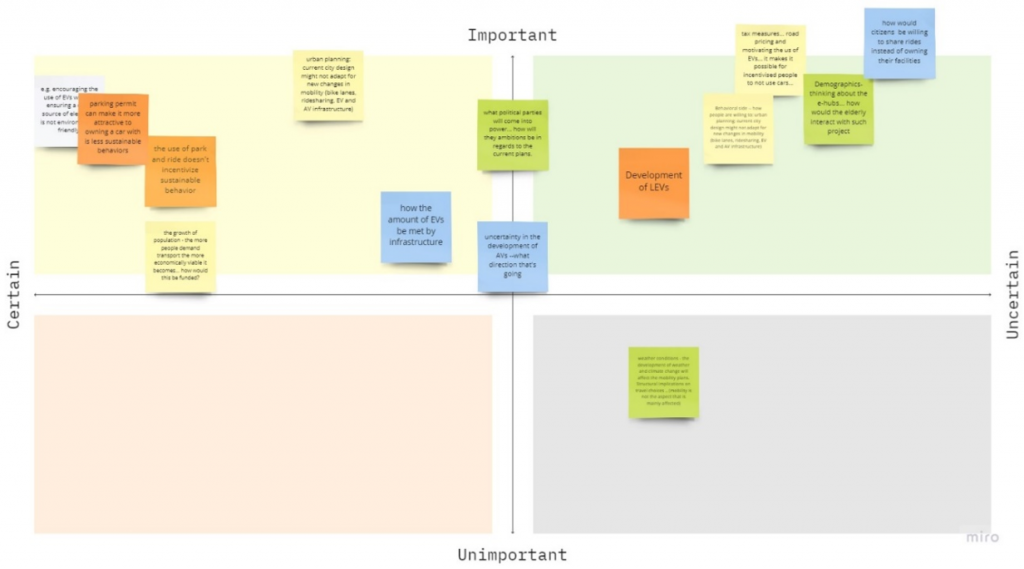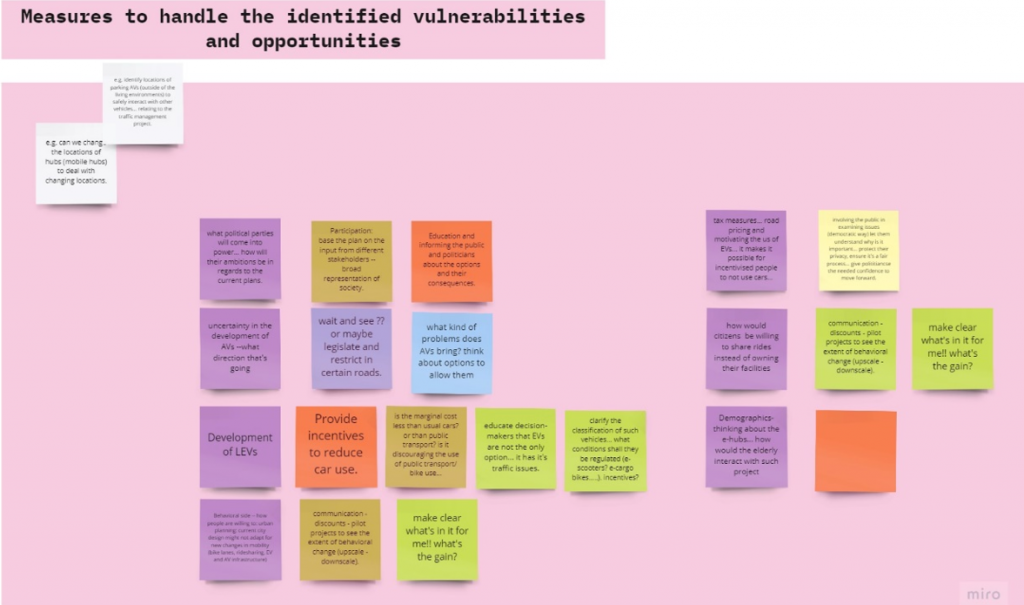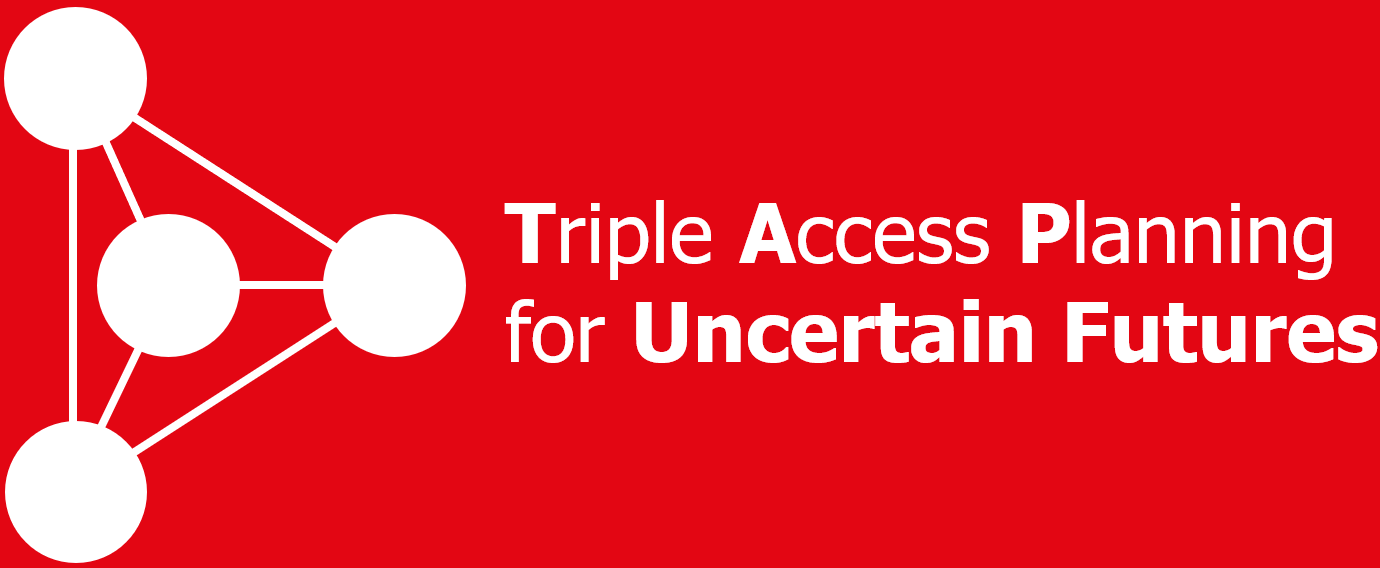By considering urban mobility in terms of accessibility, not only transport systems are important but also spatial configurations and digital infrastructure. In other words, when we talk about accessibility, we have to consider a dynamic system of physical transport, land use, and digital interaction. Many uncertainties surround such a system including for example uncertainties regarding; the extent to which telecommunication can (partially) take over physical mobility, how transport innovations might evolve, individuals‘ future location choices, and the future of goods mobility. These uncertainties might significantly affect the accessibility and decision-making in accessibility planning must, therefore, take these uncertainties into account. An extensive literature review, that we recently conducted, on using scenarios for handling uncertainty, concluded that integrating participatory explorative scenario approaches within the early steps of the planning for accessibility is necessary. It was observed that, involving stakeholders in scenario activities can be in three main forms: (1) informing, that aims at raising stakeholder’s awareness of a pre-developed plan; and sometimes have a say in weighting between alternative futures, (2) testing, where participants are given the opportunity to test how future-proof a given plan is, i.e. explore uncertainties that might influence it, and (3) creating, where participants are fully involved in planning and scenario creation.
In scenario planning activities, the “scenario development” process design is one of the most critical tasks. Many choices need to be made in advance to guarantee results (scenarios) that address the surrounding level of uncertainty (Chakraborty & McMillan, 2015; Lyons et al., 2021). Among the most important choices are; selecting the scenario type (exploratory, normative, or predictive), scenario construction (qualitative or quantitative), scenario scope, scenario development duration, resources, scenario development approach (inductive or deductive), participation platform (online, or face-to-face), and the degree of stakeholders involvement. Some of these choices can be based on the addressed level of uncertainty; they change the “scenario development” process design, and consequently impact the results.

As part of our Triple Access Planning for Uncertain Futures project, we developed and applied a workshop to: (1) understand how stakeholders imagine uncertainties, and how scenarios can support handling these uncertainties, and; (2) to test the extent of stakeholders’ participation in scenario planning for accessibility futures.. In particular, participants were invited to stress-test the current urban mobility plan of the city of Nijmegen against different future uncertainties. The workshop was part of the AMS scientific conference: reinventing the city, and we prepared it in collaboration with a policy advisor from the municipality of Nijmegen. It was attended by 16 participants, ranging between transport practitioners, academic researchers to students. The workshop’s scope was focused on three main policies in Nijmegen: (1) The New Parking Policy: moving from facilitating to controlling, (2) The eHUB project: electric shared transport facilities i.e. e-bikes, e-cargo bikes, e-cars, and (3) The new traffic management system which involves prioritization of specific streets, impeding the growth of car traffic, and deployment of innovative ICT solutions for mobility Smart. A deductive approach (approach that starts by identifying the future drivers of change, then exploring their effect on the future) was followed where, as recommended by Lyons et al. (2021), we used the STEEP framework (Social, Technological, Environmental, Economic, and Political), and a 2X2 chart to specify the level of importance and degree of uncertainty of each driver. The workshop was divided over two rounds, each of 45 minutes:
1. The first round aimed at exploring the vulnerabilities of the existing policies (i.e. how can the urban mobility plan fail) and opportunities (i.e. how can the plan succeed), based on the STEEP perspective. After identifying the vulnerabilities and opportunities, participants were asked to indicate the degree of importance and uncertainty for each of those (see Figure 2). Generally, the most frequently discussed vulnerabilities and opportunities related to the travel behavior change, the need for improving communication and information sharing (e.g. how would the elderly interact with the eHUB project), the rise of new modes of transport (e.g. autonomous vehicles), and possibilities of steering the city toward a more sustainable vision through infrastructure developments (e.g. parking, EV charging).

2. The second round aimed at specifying measures to handle the important and uncertain vulnerabilities and opportunities (see figure 3). The most frequent measures mentioned in this round concerned regulating and incentivizing sustainable modes of transport (e.g. LEVs), and increasing participatory planning and information sharing to raise awareness (e.g. to guarantee effective behavioral change).

As a conclusion we came up with the following important points to be considered in future workshops:
- It is very important to have prior knowledge of the workshop attendees (areas and level of expertise, number of attendees, affiliation/perspective, …etc.). This shall affect the workshop design and outcomes. E.g. depending on the experience of attendees, moderators need to focus more on explaining the prioritization ranges (e.g. important, unimportant, certain and uncertain).
- The more specific the case study is presented, i.e. the mobility plan, the more specific the solutions, i.e. preparatory measures, can be derived. I .e. the Nijmegen mobility plan can be broken-down into several specific policies, and these policies can be discussed in-depth.
- Selecting the platform of participation act among the most important process-design choices, for improving the session and its outcomes. If the workshop is online, it is best to choose a clearly interactive and accessible platform (e.g Miro, MS teams,…etc.). Being able to see and divide the participants in smaller groups can improve interaction and provide reliable outcomes.
- It is vital to increase participants’ knowledge of the subject and raise their awareness to motivate them to participate. Motivating participants can be through explaining why they should participate, and how the workshop might help them; as well as why the workshop is important for the project. Including this in the workshop’s introduction and conclusion can help in that.
Finally, considering this workshop being a part of the Triple Access Planning for Uncertain Futures project, a more specific focus on the three TAP dimensions can guide the rounds besides the STEEP perspectives. This can help participants to think beyond traditional mobility planning and imagine a wider range of uncertainties.
Overall, the workshop was considered successful in achieving its goals, and we want to thank all attendees for participating and helping us organize our process.
References:
Chakraborty, A., & McMillan, A. (2015). Scenario planning for urban planners: Toward a practitioner’s guide. Journal of the American Planning Association, 81(1), 18-29.
Lyons, G., Rohr, C., Smith, A., Rothnie, A., & Curry, A. (2021). Scenario planning for transport practitioners. Transportation Research Interdisciplinary Perspectives, 11, 100438.
